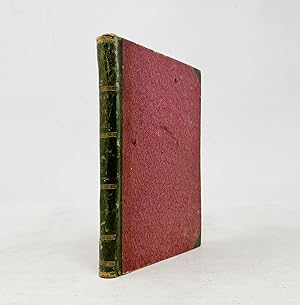Beschreibung
Paris: chez l'Auteur, An XII (1803). First edition. Octavo (7 3/16" x 5", 183mm x 127mm): with 26 double-page engraved plates: title-page, key map, 4pp. index of the streets (2 with colored insets) and 20 mapsheets with hand-color. Bound in contemporary half green morocco over red paste-paper boards. On the spine, 6 panels. Title gilt to the second panel. The engravings mounted onto azure guards. Wear to the head-piece, with the rear hinge starting at the head. Rubbing with spots of wear to the extremities. A bit of soiling to the front board. Peripheral tanning to the text-block. Splits to the lower folds of planches 7e, 11e, 12e and 17e. Lovely fresh color. Bookplate of "H. Hommet Architecte" to the front paste-down. Jean Delagrive (1689-1757) attempted in 1718 to publish a plan of Paris, which he deemed too faulty to publish and, after destroying the original plates, he eventually brought it out ten years later. He continued to improve and reissue the map almost until the year of his death. Despite his renown as a cartographer -- including a 1754 treatise on spherical trigonometry, essential to mapping over a large distance -- it is curious that this decidedly pre-revolutionary, royalist (he also issued a plan of Versailles) cartographer should be so loudly celebrated nearly 50 years after his death in the period of revolutionary dating (An I beginning September 1792). That said, Nicolas Maire, by training a military engineer who flourished in the reign of Napoleon I, boasts of his improvements over Delagrive. In addition to these substantive changes, the names of the Revolution -- the Louvre is the "Palais du Gouvernment," for example; Place de la Concorde, which had been Place de la Révolution, resumed its erstwhile name in 1795 -- color the map quite clearly. It is, unlike the vast maps of Turgot and others, meant to be used by visitors to the city; the note to the first map begins "Que l'Etranger, cette Carte a la main." The atlas belonged to the architect Henri (or Henry) Hommet (1878-1979), who designed, i.a., the Café de Madrid (formerly 6 boulevard Montmartre), one of the great literary watering-holes. Bestandsnummer des Verkäufers JLR0557
Verkäufer kontaktieren
Diesen Artikel melden
![]()




